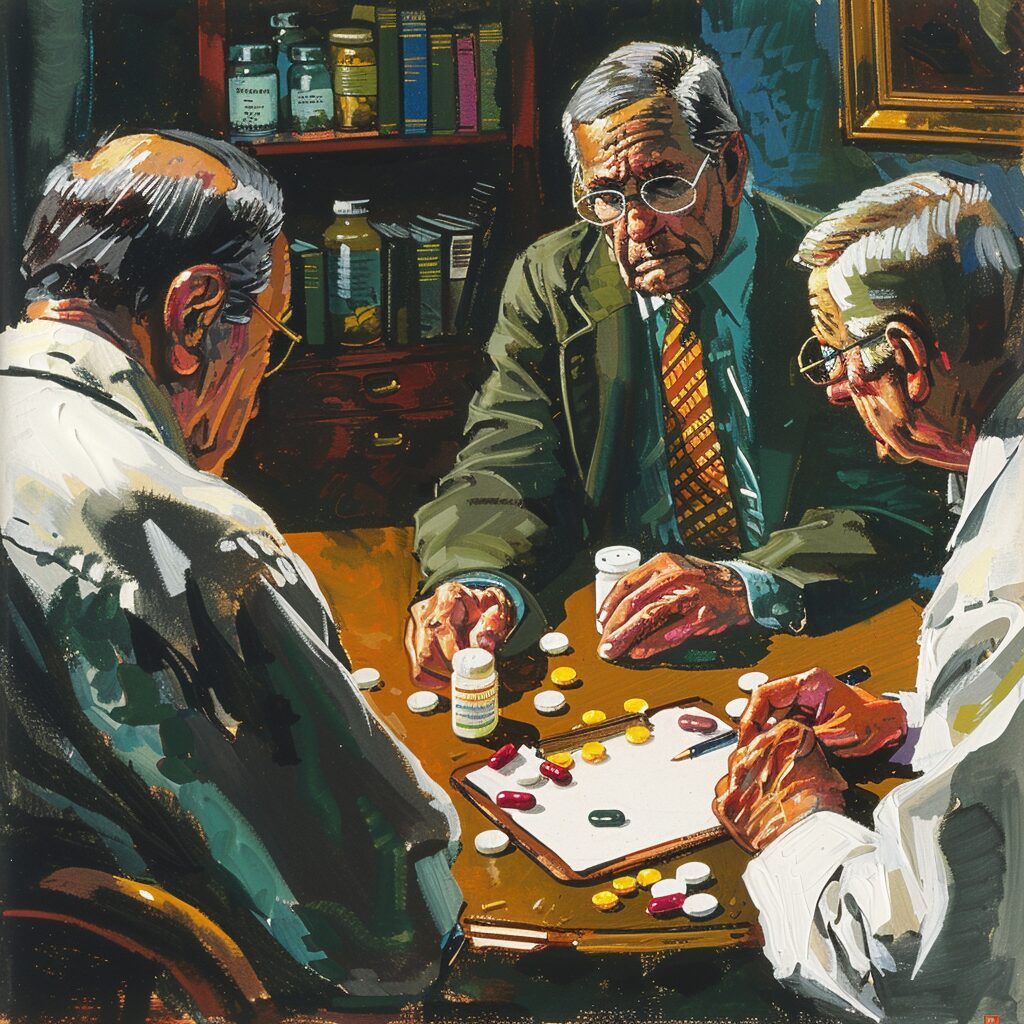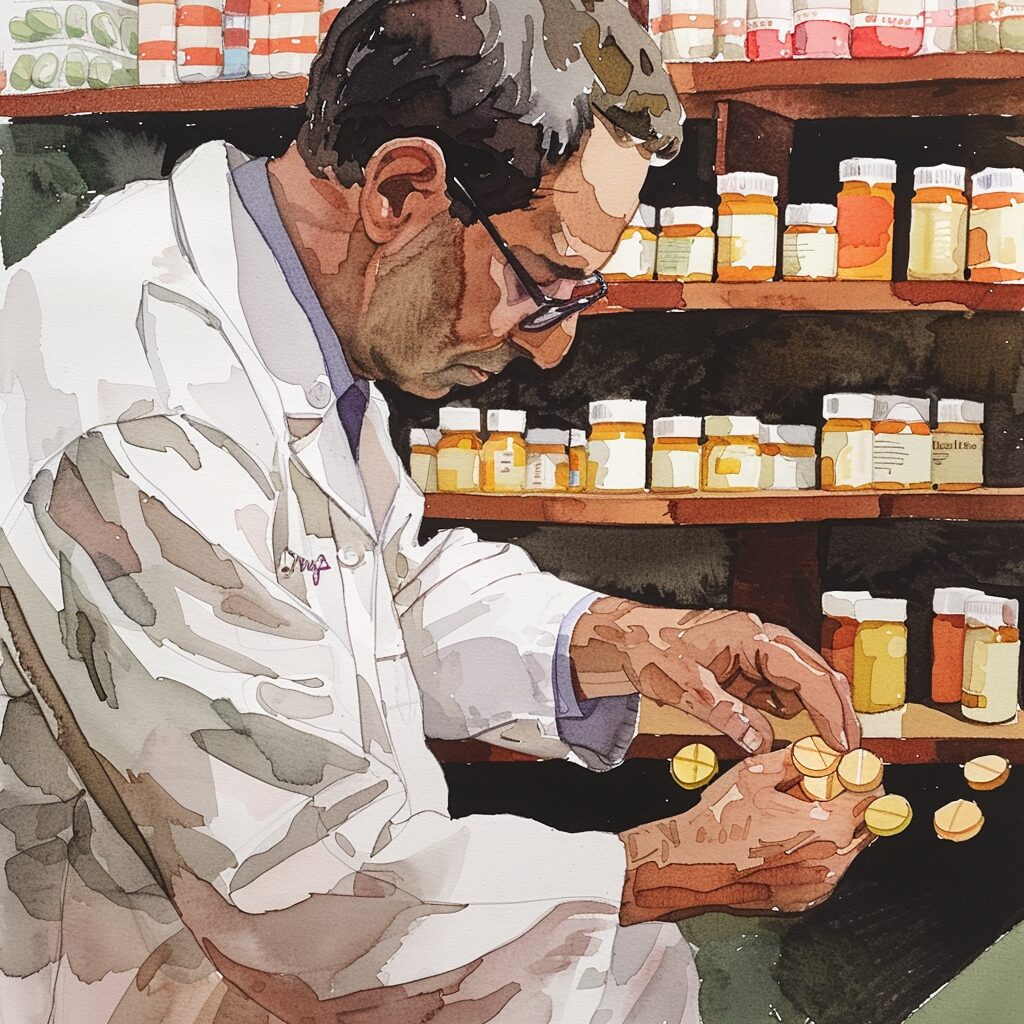A Schedule 1 drug is a classification for substances deemed highly prone to abuse with no sanctioned medical use in the US, such as heroin and LSD. This article explains the criteria for this strict categorization and its tangible impacts on legal regulation, scientific exploration, and societal views. Discover “what is a Schedule 1 drug” and what sets these drugs apart, as well as the debates surrounding their status without wading through the complexities of drug policy.
Key Takeaways
- Schedule 1 drugs are classified as having no accepted medical use, high potential for abuse, and a high risk of dependency, resulting in strict regulation and legal controls.
- Legal consequences for handling Schedule 1 drugs are severe, and the DEA oversees regulation, which greatly impacts the ability to conduct research and advance scientific understanding of these substances.
- The rigid classification and scheduling system, particularly for Schedule 1 drugs, hinders medical research and fuels policy debates regarding the potential medical benefits and appropriateness of current drug classifications.
Understanding Schedule 1 Drugs

In the world of controlled substances, Schedule 1 drugs sit at the top of the hierarchy, deemed the most dangerous with a high potential for abuse and no currently accepted medical use in the United States. Such classification makes them the subject of intense scrutiny and stringent legal controls, shaping the landscape of drug enforcement and medical research.
But what exactly earns a drug this notorious label, and how does it impact everything from criminal justice to healthcare policy?
Characteristics of Schedule 1 Substances
A substance must meet three critical criteria to find itself on the Schedule 1 list: a lack of accepted medical treatment use in the U.S., a high potential for abuse, and the possibility of causing severe psychological or physical dependence. These are not arbitrary categories but are the result of meticulous assessment by authorities to balance public health, scientific knowledge, and abuse potential.
The controversy often arises from the third criterion, as the risk of physical and psychological dependence casts a shadow over any potential therapeutic benefits, effectively stalling medical progress in its tracks.

Examples of Schedule 1 Drugs
The list of Schedule 1 drugs includes:
- Heroin
- Lysergic acid diethylamide (LSD)
- Marijuana
- Ecstasy
- Methaqualone
- Synthetic marijuana variants
- Magic mushrooms
- Bath salts
These substances, such as anabolic steroids, are considered too risky for medical use due to their abuse potential.
Alcohol Rehab South Carolina
Alcohol rehab in South Carolina offers individuals struggling with alcohol addiction a supportive and structured environment to overcome their dependency. These programs provide a range of services tailored to meet the unique needs of each individual, including detoxification, counseling, therapy, and aftercare support. With a focus on holistic healing and evidence-based practices, alcohol rehab centers in South Carolina aim to address the physical, emotional, and psychological aspects of addiction. Many facilities in the state offer residential, outpatient, and intensive outpatient programs to accommodate varying levels of severity and commitment. Additionally, South Carolina’s alcohol rehab facilities often integrate family therapy and support networks to foster long-term recovery success.
Legal Implications and Federal Enforcement

The Controlled Substances Act of 1970 (CSA), also known as the Controlled Substance Act, is the cornerstone of federal drug policy, placing the vast array of psychoactive substances, including controlled substance analogue, into a structured legal framework. It’s within this framework that the Drug Enforcement Administration (DEA) becomes the arbiter of what constitutes a controlled substance, including those infamous Schedule 1 drugs.
But what does this mean for the manufacturers, distributors, and consumers who navigate this legal minefield?
The Role of the DEA
The Drug Enforcement Agency (DEA) holds the scales of justice when it comes to drug scheduling, weighing factors such as a drug’s abuse potential, scientific evidence, and public health risks. It’s no small task, as the agency must strike a balance between enabling scientific research and preventing misuse. Recent efforts by the DEA to streamline research approvals, particularly for marijuana cultivation, reflect a growing awareness of the need for science-driven policies.
Yet, the road from application to cultivation is complex, marked by stringent reviews and regulatory hurdles that ensure only qualified manufacturers can support DEA-licensed research.
Penalties for Schedule 1 Offenses
Crossing the line with Schedule 1 substances can lead to severe penalties, reflecting the government’s stance on their high potential for abuse and absence of medical benefit. The CSA outlines strict consequences for offenses involving these drugs, aiming to deter illicit activities and maintain public safety.
Possession, manufacturing, and distribution of Schedule 1 drugs not only carry the weight of criminal prosecution but also significant social and personal repercussions.
Impact on Medical Research and Policy Debates
The Schedule 1 classification isn’t just a legal hurdle; it’s a blockade on the road to medical discovery. By labeling these drugs as highly abusable with no medical benefits, the door to research and development is effectively closed, leaving potential treatments unexplored and patients without alternatives.
This not only stifles innovation but also fuels ongoing debates about the appropriateness of such a restrictive classification in light of emerging scientific evidence.
Restrictions on Research
Researchers eager to unlock the mysteries of Schedule 1 substances must first navigate a labyrinth of regulatory requirements, from DEA registration to Institutional Review Board (IRB) protocol approvals. The process is notoriously long-winded, with each step fraught with bureaucratic challenges that can delay research for years, if not decades.
The limited number of approved suppliers, like the University of Mississippi’s marijuana program, further constricts the scope of research, hindering the development of a robust body of scientific knowledge. It’s a paradoxical cycle—without research, these drugs remain on Schedule 1, but the Schedule 1 status itself is what prevents the research from occurring.
Ongoing Discussions for Rescheduling
The debate over whether to reclassify certain Schedule 1 drugs is a tug-of-war between scientific findings, public health concerns, and political influence. While the DEA and the Department of Health and Human Services (HHS) have the power to initiate rescheduling proceedings, often political factors and public sentiment play a pivotal role in these decisions, especially regarding contentious substances like marijuana and psilocybin.
Despite legal and administrative efforts to reevaluate these drugs, the path to rescheduling is fraught with complexity and resistance. Critics argue for a more nuanced scheduling system that better aligns with the modern understanding of drug abuse and a drug’s acceptable medical potential.
What is a Therapeutic Community
A therapeutic community is a structured environment designed to promote personal growth, recovery, and rehabilitation for individuals facing mental health challenges, addiction, or behavioral issues. These communities typically operate on the principles of mutual support, shared responsibility, and active participation of all members. Within such communities, individuals engage in various therapeutic activities, including group therapy sessions, educational programs, vocational training, and communal living tasks. Peer support and social interaction play integral roles in fostering a sense of belonging and accountability among members. Through a combination of therapeutic interventions and community involvement, individuals in therapeutic communities aim to develop essential life skills, enhance self-awareness, and achieve sustainable recovery goals.
Comparing Schedules: How Schedule 1 Differs from Others
Understanding the nuances between different drug schedules is crucial for grasping the full picture of controlled substances regulation. While Schedule 1 drugs are marked by their absence of medical use and high abuse potential, other schedules allow for varying degrees of therapeutic application and risk of dependence.
From the strict controls around Schedule II substances to the more lenient regulations for Schedules III to V, each category reflects a different balance between medical value and potential for harm.
Schedule II Drugs Overview
Schedule II drugs, also known as schedule ii substance, sit on the precipice between accepted medical use and a high risk of abuse, embodying a dichotomy of pain relief and potential for addiction. These substances, which include common pain relievers like oxycodone and stimulants such as methamphetamine, are tightly regulated to ensure their therapeutic benefits are not overshadowed by the dangers of misuse.
The ongoing controversies regarding their prescription, particularly for chronic pain, underscore the complexity of balancing patient care with public health and safety.
Lower Schedules Synopsis
As we move down the scheduling ladder, the potential for abuse and risk of dependence gradually diminish. Schedule III drugs offer a lower potential for abuse compared to Schedule II, while Schedule IV drugs are associated with an even lesser risk.
The lowest rung, Schedule V, includes drugs with minimal abuse potential, often used for medicinal purposes such as cough suppression or diarrhea relief. Each step down the schedule signifies a decrease in regulatory constraints, reflecting the drug’s decreasing risk profile.
What is Drug Addiction
Drug addiction, often referred to as substance use disorder, is a chronic disease characterized by compulsive drug seeking and use despite harmful consequences. Individuals with drug addiction experience changes in the brain’s structure and function, which can persist long after the initial drug use. This condition affects various aspects of a person’s life, including their relationships, employment, and overall health. Addiction is not solely about the frequency or amount of drug use; it also involves psychological and behavioral components. Effective treatment for drug addiction typically involves a combination of therapy, medication, and support services tailored to the individual’s needs.
Navigating the Scheduling System
To effectively navigate the complex tapestry of drug scheduling, one must familiarize themselves with the resources provided by the DEA, such as their comprehensive listings of controlled substances. These resources, including the alphabetical listing of drugs, are essential tools for anyone seeking clarity on the legal status of specific drugs within the scheduling system. However, the lists alone may not capture the full scope of controlled derivatives, and for official determinations, inquiries with the DEA’s Drug and Chemical Evaluation Section are often necessary.
Summary
Embarking on this journey through the intricate world of drug scheduling reveals a landscape marked by legal complexities, medical challenges, and policy debates. From the stark restrictions of Schedule 1 drugs to the nuanced classifications of lower schedules, each level carries its own set of implications for abuse potential, medical research, and societal impact. As we continue to navigate this evolving terrain, may we strive for a balance that honors both public safety and the relentless pursuit of medical advancement.
Frequently Asked Questions
What schedule is morphine?
Morphine is classified as a Schedule II narcotic under the Controlled Substances Act. This means it has a high potential for abuse and addiction.
What schedule is tramadol?
Tramadol is classified as a Schedule IV controlled substance under the Controlled Substances Act. Therefore, it is important to adhere to the regulations regarding its use and distribution.
What are Schedule 1 controlled drugs?
Schedule 1 controlled drugs are defined as drugs with no currently accepted medical use and a high potential for abuse, examples include heroin and LSD. These drugs are considered to be the most dangerous and have severe psychological or physical dependence potential.
What is an example of a Schedule 1 drug?
Heroin, lysergic acid diethylamide (LSD), and marijuana (cannabis) are all examples of Schedule 1 drugs. These substances are classified as having a high potential for abuse and no accepted medical use in the United States.
What role does the DEA play in drug scheduling?
The DEA plays a crucial role in drug scheduling by evaluating substances based on abuse potential, pharmacological effect, and public health risk, while also overseeing the manufacturing and distribution of controlled substances.








